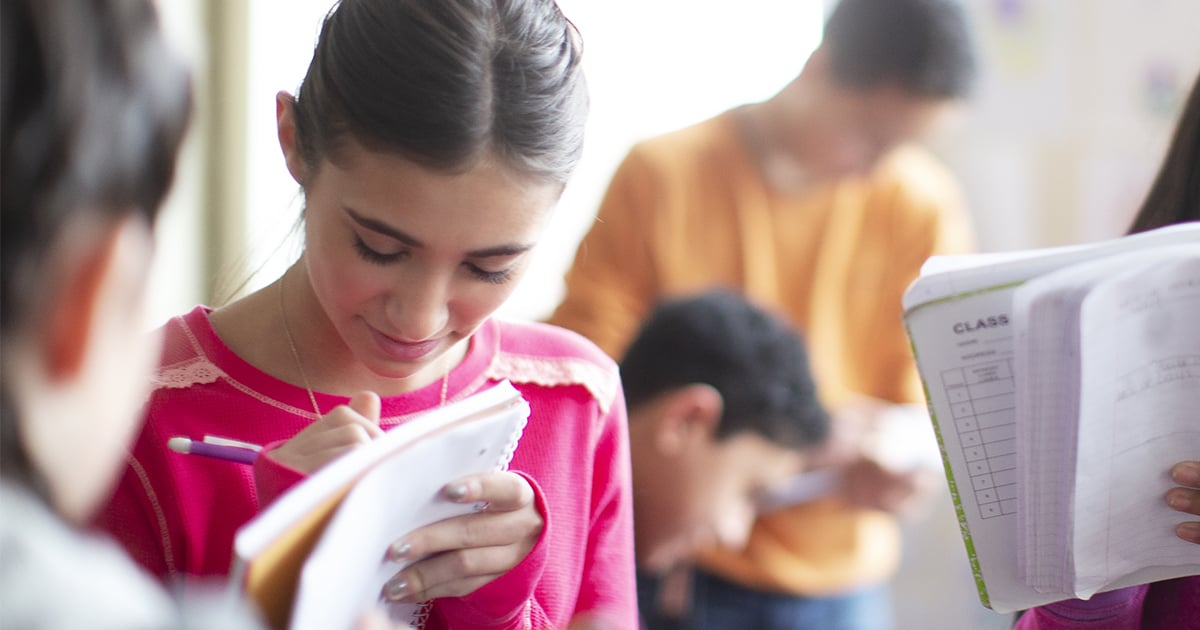Posted in: Aha! Blog > Eureka Math Blog > Implementation Support > Customizing Problems for All Learners
As a district math consultant supporting the implementation of Eureka Math®, part of my charge was to ensure that the curriculum was used as intended: to help each student build a meaningful knowledge of mathematics. Keeping the focus on students, our district team searched for ways to make the content accessible to every learner. At the same time, we needed to encourage productive struggle, keeping students challenged but not overwhelmed. We knew that struggle was necessary for our students to make sense of mathematics.
Eureka Math writers intentionally chose practice problems that create opportunities for students to experience productive struggle as they solve those problems. Teachers can use the exercises in the lessons to create meaningful practice time for each student based on what would best move their learning forward.
Customize practice problems for in-class use.
Eureka Math lessons provide a bank of problems. But it’s not necessary, and frankly it’s not possible, for every student to complete every problem in a lesson. So you should choose problems from the bank based on your students’ learning needs and the amount of class time you have.
The problems in a lesson build from simple to challenging. To choose the right problems for each of your students, do the math yourself first. You’ll notice that the first problems are the simplest and realize that most of your students can get started with them with some success. As you work, consider the different kinds of thinking required for each problem as the problems increase in complexity and challenge.
Once you’re familiar with the problems, decide which ones you will assign to your students. Carefully choose problems that will engage each student in building knowledge. Which problem will you start with? It should be one that all students will be able to handle. Which additional problems will most effectively help your students engage in more complex thinking?
Of course, you don’t have to give each student the same set of problems. For example, you might have a few students warm up with some simpler problems that are foundational to the new learning. Other students might be able to skip the first few problems and get right to the more challenging problems. In every case, Eureka Math gives you the resources to customize the sets of problems for your students.
Customize a problem.
Sometimes you need to adjust a particular problem for students. One way to do that is to use the concrete–pictorial–abstract approach. For example, if a problem is too abstract or symbolic for students, drawing a pictorial representation may help them make sense of the problem. Likewise, when you teach a relatively new concept, students might need to use concrete materials to visualize the math. These adaptations allow students greater access to the mathematics in the lesson without watering down the math.
Another strategy you can use to adapt a problem is to change some element of the problem that is a roadblock for the student. For instance, you might want to change the numbers. Consider the case of a Grade 3 student trying to make sense of the distributive property. The problem might use 7 as a factor, but the student may not yet be fluent with multiplying by 7. If you change the factor in the problem to 3, the problem still teaches the same concept, but the smaller number makes the math more accessible.
Ask questions to advance student work.
Often, you don’t have to adjust problems at all. You can simply adjust your questioning during class instruction. You may also use questioning to help individual students as they grapple with the mathematical ideas during practice. Here are some general questions I keep at the ready for such occasions:
- What do you know from reading the problem?
- How is this similar to or different from the last problem you did?
- What additional information do you wish you had to solve the problem?
- What could you draw to help you understand the problem?
Customize with scaffolds.
Sometimes students just aren’t ready to tackle some problems, and sometimes students need to be stretched. The following table offers additional suggestions for customization in those cases.
|
Challenge |
Customization |
|
The first problem is too challenging. |
Write a problem or short sequence of problems that leads students to the first problem. |
|
The jump in complexity between two problems is too big. |
Write a problem or set of problems that bridges student understanding between the two problems. |
|
Students lack foundational skills necessary for the lesson. |
Start your lesson with a quick, engaging fluency exercise, such as a whiteboard exchange or Sprint, to practice foundational skills. |
|
Students are ready for more work at the abstract level. |
Assign the more challenging practice problem followed by a whiteboard exchange of more abstract problems before the Student Debrief or Closing of the lesson. |
Submit the Form to Print

Tricia Miller
Tricia Miller is a Eureka Math Implementation Leader. She is a former teacher, instructional coach, and district math consultant from Southwest Louisiana. Tricia is also past president of the Louisiana Association of Teachers of Mathematics.
Topics: Implementation Support











